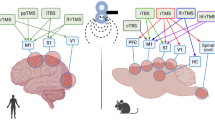Abstract
Objective
Psychotherapy and biological psychiatry remain divided in psychiatry residency curricula. Behavioral neurobiology and neuropsychiatry provide a systems-level framework that allows teachers to integrate biology, psychodynamics, and psychology.
Method
The authors detail the underlying assumptions and outline of a neural systems-based neuroscience course they teach at the National Capital Consortium Psychiatry Residency Program. They review course assessment reports and classroom observations.
Results
Self-report measures and teacher observations are encouraging. By the end of the course, residents are able to discuss both neurobiological and psychodynamic/psychological concepts of distributed biological neural networks. They verbalize an understanding that psychology is biology, that any distinction is artificial, and that both are valuable.
Conclusions
A neuroscience curriculum founded on the underlying principles of behavioral neurobiology and neuropsychiatry is inherently anti-reductionistic and facilitates the acquisition of detailed information as well as critical thinking and cross-disciplinary correlations with psychological theories and psychotherapy.
Similar content being viewed by others
References
Kandel ER: A new intellectual framework for psychiatry. Am J Psychiatry 1982; 155: 457–469
Engel GL: The biopsychosocial model and medical education: who are to be the teachers? N Engl J Med 1982; 306: 802–805
Mohl PC: Should psychotherapy be considered a biological treatment? Psychosomatics 1987; 28: 320–326
Taylor MA: One psychiatry or two? Neuropsychiatry Neuropsychol Behav Neurol 1989; 2: 1–3
LeDoux JE: Cognitive-emotional interactions in the brain. Cognition and Emotion 1989; 3: 267–289
LeDoux J: The Emotional Brain. New York, Simon & Schuster, 1996
Slavney PR: The mind-brain problem, epistemology, and psychiatric education. Acad Psychiatry 1993; 17: 59–66
Damasio AR: Descarte’s Error, Emotion, Reason and the Human Brain. New York, GP Putnam’s Sons, 1994
Damasio AR: The Feeling of What Happens. Orlando, Fla, Harcourt Brace Jovanovich, 1999
APA: Diagnostic and Statistical Manual of Mental Disorders, 4th ed., text revision. Washington, DC, American Psychiatric Association, 2000
Yakovlev PI: Motility, behavior and the brain. J Nerv Ment Disease 1948; 107: 313–335
MacLean PD: The Triune Brain in Evolution. New York, Plenum, 1990
Panksepp J: Affective Neuroscience: The Foundations of Human and Animal Emotions. New York, Oxford University Press, 1998
Gloor P: The Temporal Lobe and Limbic System. New York, Oxford University Press, 1997
Rumelhart DE, McClelland JL: Parallel Distributed Processing: Explorations in the Microstructure of Cognition: Vol. 1: Foundations. Cambridge, Mass, MIT Press, 1986
Matthews MK Jr, Koenigsberg R, Shindler B, et al: Neuro-behavioral rounds and interdisciplinary education in neurology and psychiatry. Med Educ 1998; 32: 95–99
Green R, Clark A, Hickey W, et al: Braincutting for psychiatrists: the time is ripe. J Neuropsychiatry Clin Neurosci 1999; 11: 301–306
Lane R, Potter R: Functional neuroanatomy of psychiatric disorders: a didactic course for residents. Acad Psychiatry 2001; 25: 148–155
Nolte J: The Human Brain: An Introduction to its Functional Anatomy. 5th ed. St. Louis, Mosby, 2002.
Lacy TJ, Hughes JD: A systems approach to behavioral neurobiology: integrating psychodynamics and neuroscience in a psychiatry curriculum. J Am Acad Psychoanal Dyn Psychiatry 2006; 34: 43–72
Dianne Trumbull. West Virginia University (personal communication), 2006
Author information
Authors and Affiliations
Corresponding author
Additional information
The views expressed in the paper are those of the authors and do not reflect the views or policies of the Department of Defense or the U.S. Government.
Rights and permissions
About this article
Cite this article
Lacy, T., Hughes, J.D. A Neural Systems-Based Neurobiology and Neuropsychiatry Course: Integrating Biology, Psychodynamics, and Psychology in the Psychiatric Curriculum. Acad Psychiatry 30, 410–415 (2006). https://doi.org/10.1176/appi.ap.30.5.410
Received:
Accepted:
Published:
Issue Date:
DOI: https://doi.org/10.1176/appi.ap.30.5.410




